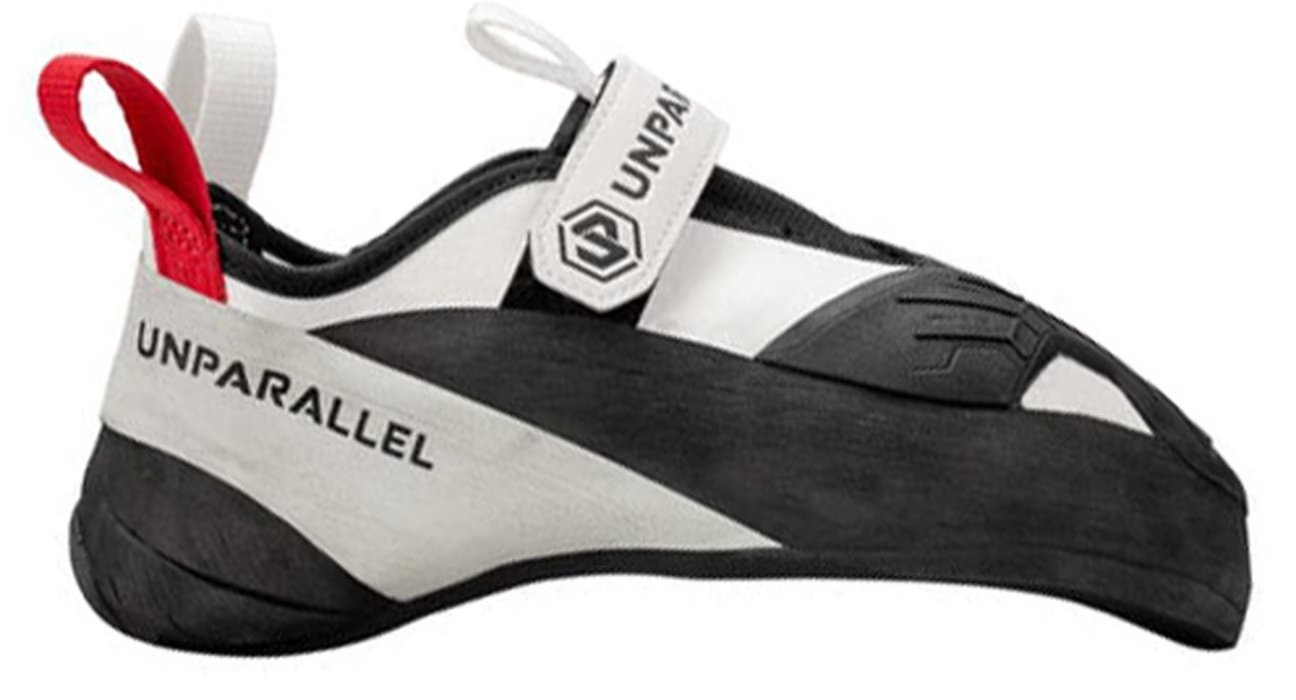“`html
Introduction: Your Foundation for Ascending – The Crucial Role of Climbing Shoes
Estimated reading time: 12 minutes
Key Takeaways
- Climbing shoes are the most critical piece of climbing gear for **rock climbing** and **bouldering**.
- They are specialized tools designed to enhance grip, maneuverability, and precision.
- Understanding their anatomy—rubber soles, asymmetry, downturn, and tensioning—explains their performance.
- Different types of climbing shoes (neutral, moderate, aggressive) cater to various disciplines and skill levels.
- A proper **shoe fit** is paramount for performance, safety, and enjoyment, with a snug but not painful feel being ideal.
- Avoiding common fit mistakes like shoes that are too big or painfully tight is crucial.
- Proper care and maintenance extend the lifespan and performance of your climbing shoes.
Table of contents
- Introduction: Your Foundation for Ascending – The Crucial Role of Climbing Shoes
- Key Takeaways
- Understanding Climbing Shoe Anatomy: The Science Behind the Stickiness
- Types of Climbing Shoes: Finding Your Discipline’s Match
- The Paramount Importance of Shoe Fit: Your Direct Connection to the Rock
- Beyond the Shoes: Essential Climbing Gear
- Keeping Your Climbing Shoes in Top Condition: Longevity and Performance
- Final Ascent: Your Perfect Climbing Shoe Journey
When you think about the essential **climbing gear** for **rock climbing** or **bouldering**, what comes to mind first? While ropes, harnesses, and chalk bags are all vital, there’s one piece of equipment that forms your most direct connection to the rock face: your **climbing shoes**. These aren’t your everyday sneakers; they are highly specialized tools engineered to provide the grip, precision, and support you need to ascend. The right **shoe fit** isn’t just about comfort; it’s a fundamental determinant of your performance, safety, and the sheer enjoyment you derive from the sport. This guide will equip you with the knowledge to understand the intricate design of climbing shoes, navigate the different types available, and, most importantly, find that perfect **shoe fit** that will elevate your climbing experience.
Understanding Climbing Shoe Anatomy: The Science Behind the Stickiness
The first step to appreciating **climbing shoes** is to understand how they fundamentally differ from any other footwear you own. Their design is a masterful blend of form and function, meticulously crafted to interact with rock surfaces in ways that standard shoes simply cannot.
Let’s break down the key design features:
- Rubber Soles: This is arguably the most critical component. Climbing shoes utilize specialized, high-friction rubber compounds. These aren’t just for durability; they are engineered to offer unparalleled grip. Whether you’re standing on a minuscule edge (a technique known as edging) or pressing your foot flat against a slab of rock (smearing), the sticky rubber provides the necessary friction to keep you from slipping. Different rubber formulations offer varying degrees of stickiness, stiffness, and longevity, catering to different climbing preferences and rock types.
- Asymmetry: Take a look at a pair of climbing shoes, and you’ll likely notice they aren’t perfectly straight. Most climbing shoes feature an asymmetrical design, meaning they curve inward towards the big toe. This design concentrates the force of your foot onto a smaller, more powerful point, allowing for incredibly precise and forceful toe placements on tiny holds. It’s this asymmetry that enables delicate footwork and the ability to stand on holds that would be impossible with flat-footed shoes.
- Downturn (Camber): Many modern climbing shoes exhibit a downturned profile. This means the shoe curves downwards from the heel to the toe, creating a “banana” shape. This aggressive curve forces your foot into a powerful, arched position, effectively keeping your weight over your toes. This is particularly beneficial for steeper climbs and overhangs, where maintaining tension and pushing off with your feet is crucial for staying on the wall. The degree of downturn varies significantly, with more aggressive shoes offering a more pronounced curve for advanced climbing.
Source: REI, Ocun - Tensioning and Midsoles: The construction also includes crucial elements like tensioning around the heel and the properties of the midsole. Tensioning in the heel cup helps to create a snug fit that prevents your foot from slipping out, essential for heel hooking. The midsole, the layer between the outsole and the upper, can be stiff or flexible. Stiffer midsoles provide more support, making them excellent for edging on small holds, while more flexible midsoles offer greater sensitivity, allowing you to feel the rock better for smearing and delicate foot placements.
Source: REI, Ocun


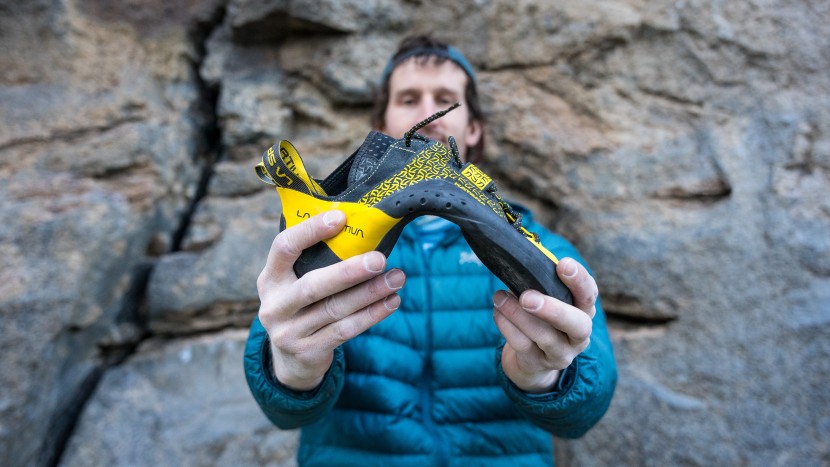

These integrated design elements work in harmony to empower climbers to execute specific techniques like edging, smearing, and hooking with greater confidence and effectiveness. Understanding this anatomy is key to appreciating why selecting the right **climbing shoes** for your **rock climbing** or **bouldering** needs is so important.
Types of Climbing Shoes: Finding Your Discipline’s Match
Just as different climbing disciplines demand different approaches, so too do different types of **climbing shoes**. Understanding these categories will help you narrow down your choices and find a shoe that complements your preferred style of climbing.
Here’s a breakdown of the common profiles:
- Neutral Profile Shoes: These shoes feature a relatively flat sole and a less aggressive, more symmetrical shape. They prioritize comfort and are an excellent choice for beginners, long multi-pitch **rock climbing** routes where you’ll be wearing them for extended periods, and for general gym climbing. Their comfort allows your foot to relax, reducing fatigue during long sessions.
Source: REI, Climbing.com, Climbing Anchors - Moderate Profile Shoes: Striking a balance between comfort and performance, moderate profile shoes typically have a slight downturn and a more asymmetrical shape than neutral shoes. They offer improved edging capabilities and a more secure fit for your foot. These are a great option for intermediate climbers or those looking for a versatile shoe suitable for a wide range of climbing styles, including sport climbing and more challenging gym routes.
Source: REI, Climbing Anchors - Aggressive Profile Shoes: Characterized by a significant downturn and a highly asymmetrical shape, these shoes are built for maximum performance on steep terrain. The aggressive shape forces your foot into a powerful, downward-pointing position, allowing for extreme toe power and precision on small holds and overhangs. They are typically favored by advanced climbers tackling difficult sport routes and **bouldering** problems where every bit of leverage counts.
Source: REI, Ocun

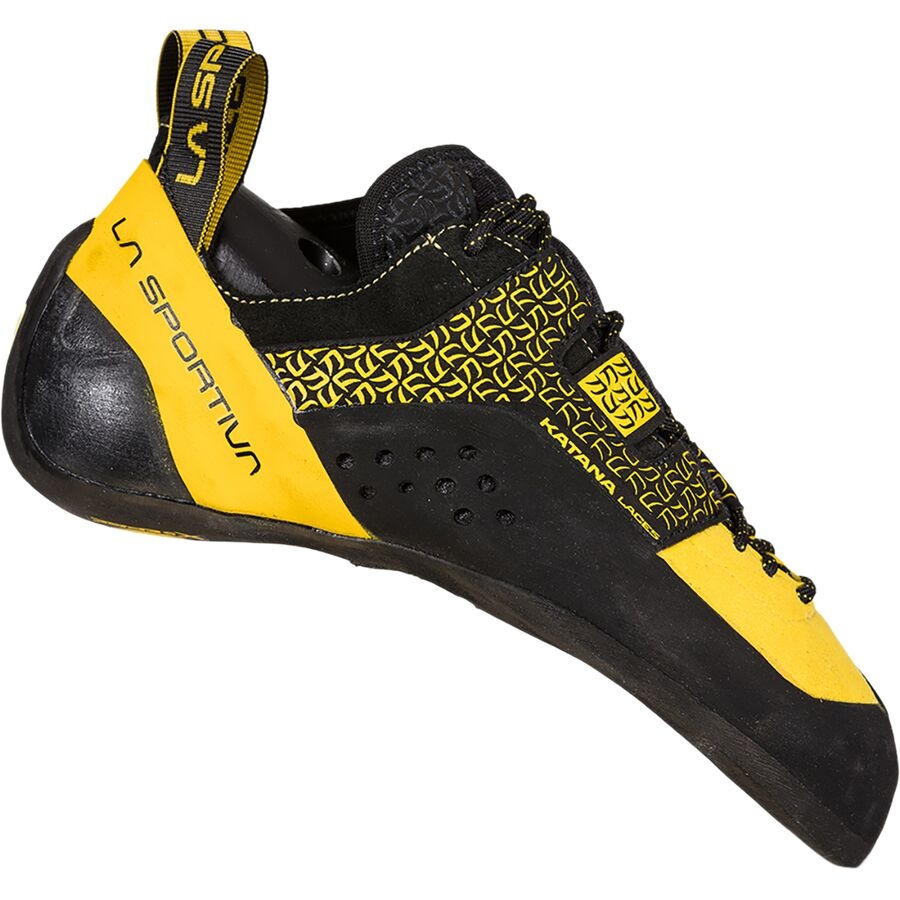

When choosing, consider your primary climbing discipline and your current skill level. A beginner tackling their first **rock climbing** routes might find a neutral shoe most suitable, while a seasoned **bouldering** enthusiast pushing their limits will likely gravitate towards an aggressive model. Understanding these distinctions is crucial for selecting **climbing shoes** that will allow you to perform at your best.
The Paramount Importance of Shoe Fit: Your Direct Connection to the Rock
We cannot overstate this: the **shoe fit** is the single most critical factor when selecting **climbing shoes**. A proper **shoe fit** is not a luxury; it’s a non-negotiable requirement for effective and safe climbing. Even the most advanced shoe technology will be rendered ineffective by a poor fit.
So, what constitutes a good fit? Generally, **climbing shoes** are meant to fit snugly. Your toes should be right at the end of the shoe, likely slightly bent or curled. This ensures that your entire foot is making contact with the shoe’s edge, allowing for precise weight transfer. However, and this is a crucial distinction, *snug does not mean painfully tight*. You should not feel immediate, sharp pain, nor should circulation be cut off. There should be no significant “dead space” within the shoe where your foot can move around loosely. Crucially, when you walk or stand, your heel should remain firmly in place with no noticeable lift.
Source: Climbing Anchors, Ocun

Here’s a practical guide to achieving that perfect fit:
- Timing is Key: Try on shoes at the end of the day. Your feet naturally swell throughout the day, especially after activity. Trying shoes on when your feet are at their largest will give you the most accurate representation of how they’ll fit during a climbing session.
Source: Climbing Anchors - The Feel: Once on, stand up and feel the fit. Your toes should be pressing against the front of the shoe, providing that crucial pressure for edging. There should be no empty space above your toes. Flex your foot. Does it feel like your toes are being pushed into a powerful position? Wiggle your toes – can you do so slightly, or are they painfully crammed? There should be no heel slippage when you walk or press your toes against a wall.
- Common Mistakes to Avoid:
- Buying shoes too big: This is a common error, especially for beginners. Shoes that are too large lead to poor precision, reduced grip, and difficulty with techniques like toe hooking. Your foot will slide around inside, negating the shoe’s design.
- Buying shoes that are excruciatingly painful: While a snug fit is necessary, shoes that cause sharp or unbearable pain will inevitably lead to shorter climbing sessions, decreased focus, and potential injury. Discomfort is one thing; agony is another.
- Ignoring sizing variations: Brands and even different models within the same brand can fit very differently. A size 9 in one brand might be a size 9.5 or even a size 8.5 in another. Always try on multiple pairs and sizes.
Source: Climbing Anchors
- Beginner’s Priority: For those new to **rock climbing** and **bouldering**, it’s often best to prioritize a comfortable, snug fit over the most aggressive, performance-oriented features. A comfortable shoe that fits well will allow you to climb more, learn more, and build confidence.
Source: Climbing.com, Climbing Anchors
A poor **shoe fit** can have significant negative consequences. It can lead to decreased climbing performance, making it difficult to execute even basic techniques. More seriously, it can result in injuries such as blisters, chafing, bruised toenails, tendonitis, and, in the long term, foot deformities. Investing the time and effort to find the right **shoe fit** is an investment in your climbing ability and your long-term foot health.
Source: Climbing Anchors, Ocun
Beyond the Shoes: Essential Climbing Gear
While we’ve dedicated this discussion to the indispensable **climbing shoes**, it’s important to remember they are part of a larger ecosystem of **climbing gear**. Your shoes are your primary interface with the rock, providing the crucial connection for your feet, but they work in conjunction with other equipment to ensure safety and enhance your climbing experience.
Here are a few other essential pieces of **climbing gear** that complement your shoes:
- Chalk: Used to keep hands (and sometimes feet) dry, chalk significantly improves grip by absorbing moisture. A good chalk bag and quality chalk are essential for maintaining friction, especially on longer climbs or in humid conditions.
- Harness: The harness is your primary safety device, securely connecting you to the climbing rope. It distributes forces from a fall evenly across your body and provides attachment points for your belay device and other accessories.
- Belay Device and Carabiner: This system is used by your belayer to manage the rope, arresting your fall if necessary and controlling the rope as you ascend. A reliable belay device and a locking carabiner are critical safety components.

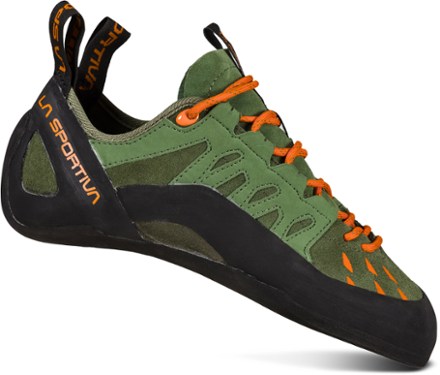

Despite the importance of these other items, the **climbing shoes** remain uniquely significant. They have the most immediate and direct impact on your ability to move on the rock, dictating your precision, your ability to stand on small holds, and your overall footwork. While a good harness and rope are non-negotiable for safety, your shoes are what truly enable you to interact with and ascend the vertical world.
Source: REI, Ascend Climbing
Keeping Your Climbing Shoes in Top Condition: Longevity and Performance
Once you’ve invested in a great pair of **climbing shoes**, taking care of them is crucial for maintaining their performance and extending their lifespan. Proper maintenance ensures that the specialized rubber remains sticky and that the shoe’s structure holds up to the demands of climbing.
Here’s how to keep your climbing shoes in prime condition:
- Post-Climb Care: After each climbing session, take a moment to brush off any dirt, mud, or chalk dust from the rubber soles and edges. This debris can reduce friction and wear down the rubber faster. A stiff brush works well for this.
- Storage: This is a critical point. Always store your **climbing shoes** in a cool, dry place, away from direct sunlight and extreme heat. *Never* leave them in a hot car, on a radiator, or stuffed in a damp gym bag for extended periods. Heat and moisture degrade the rubber compounds and the adhesives that hold the shoe together, significantly shortening their life and compromising their performance. Allow them to air out after use before storing.
Source: Climbing Anchors, Ascend Climbing - Cleaning: If your shoes get particularly dirty, a light hand wash with cool water and a mild soap can be effective. Avoid harsh chemicals, as they can damage the rubber and synthetic materials. Crucially, never put your climbing shoes in a washing machine or dryer. Machine washing can warp the shoe’s shape, damage the internal structure, and destroy the rubber. Always air dry them completely away from direct heat sources.
Source: Climbing Anchors, Ascend Climbing
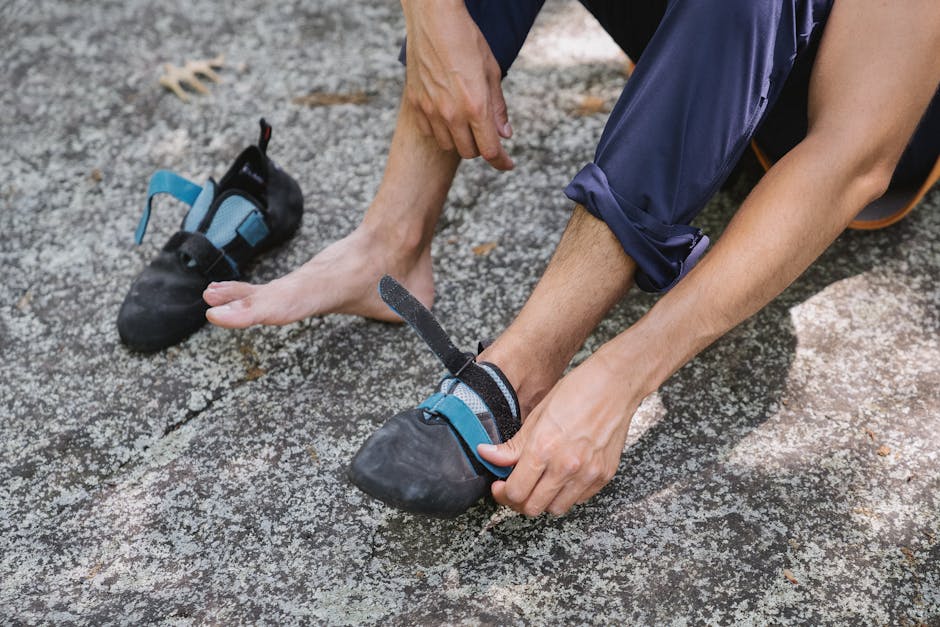

By following these simple care guidelines, you can ensure your **climbing shoes** continue to perform at their best, providing the grip and support you need for countless ascents.
Final Ascent: Your Perfect Climbing Shoe Journey
As we reach the summit of this exploration into **climbing shoes**, it’s clear that these specialized pieces of **climbing gear** are far more than just footwear. They are extensions of your body, critical tools that directly influence your capability on the rock. We’ve seen how their intricate design—from the sticky rubber soles to the precise asymmetry and strategic downturn—is engineered to enhance your performance in **rock climbing** and **bouldering**. Furthermore, understanding the different types of shoes available and matching them to your discipline is key.
But above all, the paramount importance of the **shoe fit** cannot be overstated. A proper fit ensures that your shoes function as intended, providing the necessary precision and power without causing undue pain or injury. It’s about finding that sweet spot where snug security meets comfortable performance. Remember the advice on trying shoes at the end of the day, feeling for dead space, and avoiding the common pitfalls of shoes that are too big or painfully tight. For beginners, prioritizing a comfortable, well-fitting shoe is the foundation for a positive and progressive climbing journey.
Source: REI, Climbing.com, Climbing Anchors

Your investment in time to find the *right* **shoe fit**, considering your intended climbing style, is arguably one of the most impactful decisions you can make as a climber. It’s a direct investment in your ability to grip, to edge, to smear, and ultimately, to ascend.
We strongly encourage you to visit a reputable local climbing shop. Speak with knowledgeable staff, explain your climbing experience and goals, and, most importantly, try on as many different pairs and sizes as needed. Feel the differences, understand the snugness, and discover what a truly great **shoe fit** feels like. This hands-on approach is invaluable and will set you on a path towards a more enjoyable, progressive, and ultimately, more rewarding climbing journey. Proper care and maintenance will ensure your trusty companions stand the test of time and countless climbs.
Frequently Asked Questions
- Q: How tight should climbing shoes be?
A: Climbing shoes should be snug, with your toes slightly bent. There should be no dead space. They should not be painfully tight, and circulation must not be cut off. Your heel should not lift when you stand or walk. - Q: Can I use regular sneakers for climbing?
A: No, regular sneakers are not suitable for climbing. They lack the sticky rubber, precise fit, and specialized design needed for grip and performance on rock. Using them can be dangerous and will significantly hinder your climbing ability. - Q: How often should I replace my climbing shoes?
A: This varies greatly depending on the frequency and intensity of your climbing, as well as the shoe’s construction and your footwork. Generally, when the rubber is significantly worn down, the shoe loses its grip and effectiveness. Many climbers replace them every 6-18 months of regular use. - Q: Do climbing shoes stretch?
A: Yes, climbing shoes do stretch, particularly leather shoes. Synthetic shoes stretch less. When trying on shoes, account for a small amount of stretch over time. However, don’t buy shoes that are intentionally too large hoping they will stretch to fit. - Q: What is the difference between bouldering shoes and sport climbing shoes?
A: While there’s overlap, bouldering shoes often feature more aggressive downturns and asymmetry for powerful, dynamic movements on steep terrain. Sport climbing shoes can range from moderate to aggressive, depending on the style of climbing, but often prioritize a balance of edging performance and comfort for longer routes. - Q: Can I resole my climbing shoes?
A: Yes, many climbing shoes can be resoled. This is a cost-effective way to extend the life of a well-fitting pair of shoes once the original rubber has worn out.

“`


